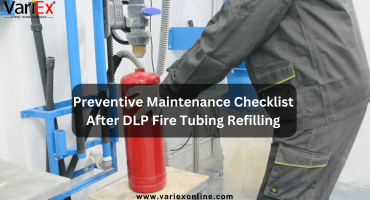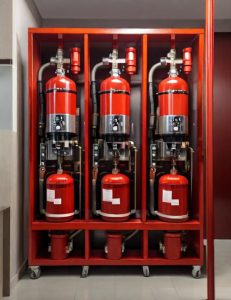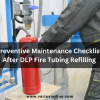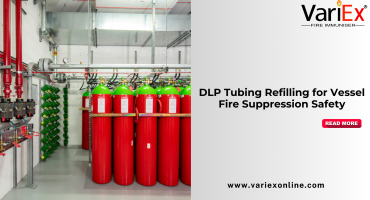![]()
Fire Immuniser
+91-7829629111
Email: info@variex.in
Varistor Technologies Pvt. Ltd.
Block-1, First Floor, Ardente Office One, Hoodi Circle, ITPL Main Road, Bengaluru, Karnataka 560048, IN
How To Handle Fire Fighting System Pipe
When it comes to fire safety, having a well-maintained and effective fire fighting system is crucial. One important aspect of this system is the fire fighting system pipe. Proper handling and maintenance of these pipes are vital to ensure their functionality in times of need. In this article, we will guide you through the process of handling fire fighting system pipes, providing you with essential tips and insights to keep your system ready for action.
1. Regular Inspection
Regular inspection of fire fighting system pipes is essential to identify any potential issues or damages. Inspect the pipes at least once a month to ensure they are in good condition. Look out for signs of corrosion, leaks, or clogs. Additionally, check if there are any loose fittings or damaged valves. Document any findings and address them promptly to avoid any potential failures when it matters the most.
2. Proper Cleaning
Cleaning the fire fighting system pipes is necessary to prevent obstructions that may hinder water or firefighting agents' flow. Use appropriate cleaning methods based on the type of material the pipes are made of. Regularly flush the pipes with water to remove any dirt or debris accumulated over time. Avoid using abrasive cleaning agents that may cause damage. If needed, consult professionals with experience in fire fighting system maintenance for guidance.
3. Adequate Lubrication
Ensuring the smooth operation of valves and fittings is crucial in fire fighting systems. Regularly lubricate the valves and fittings with appropriate lubricants to prevent them from seizing up or becoming difficult to operate. This will allow efficient control and activation of the system during emergencies. Be cautious not to over-lubricate, as it may attract dirt and cause clogs.
4. Protection from Extreme Temperatures
Various temperatures expose fire fighting system pipes, and extreme heat or cold can pose potential risks. Protect the pipes from direct sunlight or extremely cold environments to prevent degradation or freezing. Insulating the pipes can help maintain stable temperatures, ensuring their long-lasting functionality.
5. Adequate Support
Providing proper support to fire fighting system pipes is essential to prevent sagging or potential damage due to excess weight or vibrations. Ensure that the pipes are securely anchored to the structure and supported at specific intervals. Consult relevant guidelines or professionals to determine the appropriate support mechanisms based on the pipe material and diameter.
6. Prompt Repairs
If inspections or routine maintenance detect any issues or damages, promptly address them. Leaks, corrosion, or other damages can compromise the effectiveness of the fire fighting system. Ensure that you have a reliable repair and replacement plan in place to promptly address any identified issues, ensuring your system is always ready for action.
Conclusion
Proper handling and maintenance of fire fighting system pipes are vital for ensuring the reliability and effectiveness of a fire safety system. Regular inspections, cleaning, and lubrication are key aspects to keep in mind. Protecting the pipes from extreme temperatures and providing adequate support further enhances their longevity and functionality. Remember, prompt repairs are crucial to address any identified issues promptly. By following these guidelines, you can have the peace of mind knowing that your fire fighting system pipes are always ready to step up and combat potential fire emergencies.
Frequently Asked Questions
Q: What material is commonly used for fire fighting system pipes?
The most common material used for fire fighting system pipes is steel. It is durable, resistant to corrosion, and can withstand high pressures.
Q: How often should fire fighting system pipes be inspected?
Inspect fire fighting system pipes at least annually to ensure they are in proper working condition. Additional inspections may be necessary depending on local regulations or specific circumstances.
Q: What should be done if a fire fighting system pipe is damaged?
If a fire fighting system pipe is damaged, it should be repaired or replaced immediately. Any leaks or cracks compromise the effectiveness of the system and pose a safety risk.
Q: Are there any specific requirements for the installation of fire fighting system pipes?
Yes, there are specific requirements for the installation of fire fighting system pipes. Local building codes and regulations outline these requirements, often involving factors such as pipe size, material, and configuration.
Q: How are fire fighting system pipes tested?
Fire fighting system pipes are tested by conducting a hydrostatic pressure test. This involves filling the pipes with water and pressurizing them to a predetermined level to ensure their integrity.
Q: Can fire fighting system pipes be used for other purposes?
Use fire fighting system pipes only for their intended purpose, which is delivering water or fire-suppressing agents to the required areas during an emergency. Using them for other purposes can result in system failure.
Final Say
We at VariEx.in or Variexonline.com have mastered the art of designing, installing, inspecting, and fixing automatic sprinkler systems with the help of our in-house team, which is capable of delivering the fire sprinkler services you need, whether large or small and at affordable cost.
To schedule a fire sprinkler installation, or you think our services could benefit your commercial property, contact us online or give us a call at, 7829629111
"WHAT YOU CAN READ NEXT"
 Read more +24 November 2023 in Fire Extinguisher
Read more +24 November 2023 in Fire ExtinguisherWhat types of fire extinguishers are available for different fire classes?
 Read more +11 July 2025 in Fire Suppression
Read more +11 July 2025 in Fire Suppression







